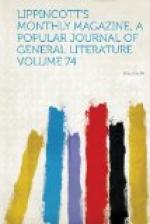Their history exhibits in many respects a marked parallelism. Each was founded as a frontier-city, as the outpost of aggressive civilization. Each has shared to the full the vicissitudes of the dynasty to which it was attached. Each has ended in becoming the centre and capital of an extensive empire. On the other hand, the differences between them are no less significant. Vienna is the older of the two. It can claim, in fact, a faint reflex of the glory of the old Roman world, for it was founded as a castrum and military colony by Vespasian in the first century of our era. This ancient Vindobona was the head-quarters of the thirteenth legion, which was replaced in the next century by the more famous tenth, the pia fidelis. Until the fifth century, Vindobona and the neighboring Carnuntum (not far from the modern Pressburg) were the seats of Roman power along the middle Danube. But when the empire fell, they fell with it. For centuries all traces of Vienna are lost. The valley of the Danube was the highway for Goth and Slave, Avar and Hun, who trampled down and ruined as they advanced or receded. Not until the Carolingian era do we find indications of a more stable order of things. The great Carl, having consolidated all the resources of Western Europe under his autocratic will, having crushed the Saracens and subdued the Saxons and Bavarians, resolved to make the Danube as well as the Rhine his own. The idea was stamped with genius, as all his ideas were, and the execution was masterly. The Frankish leudes, with their Saxon and Bavarian auxiliaries, routed the Avars in battle after battle, and drove them back beyond the Raab and the Theiss. The “eastern marches” became, and have remained to this day, the bulwark of Christendom. Carl’s successors in Germany, the Saxon and Franconian emperors, continued the work. In the year 996 we find the word Ostar-rich (OEsterreich) appearing for the first time. From 976 to 1246 the duchies were in the possession of the Babenberg family. In 1276 they were annexed by Rudolph of Habsburg. Ever since then they have constituted the central possession of the house of which he was the founder.




